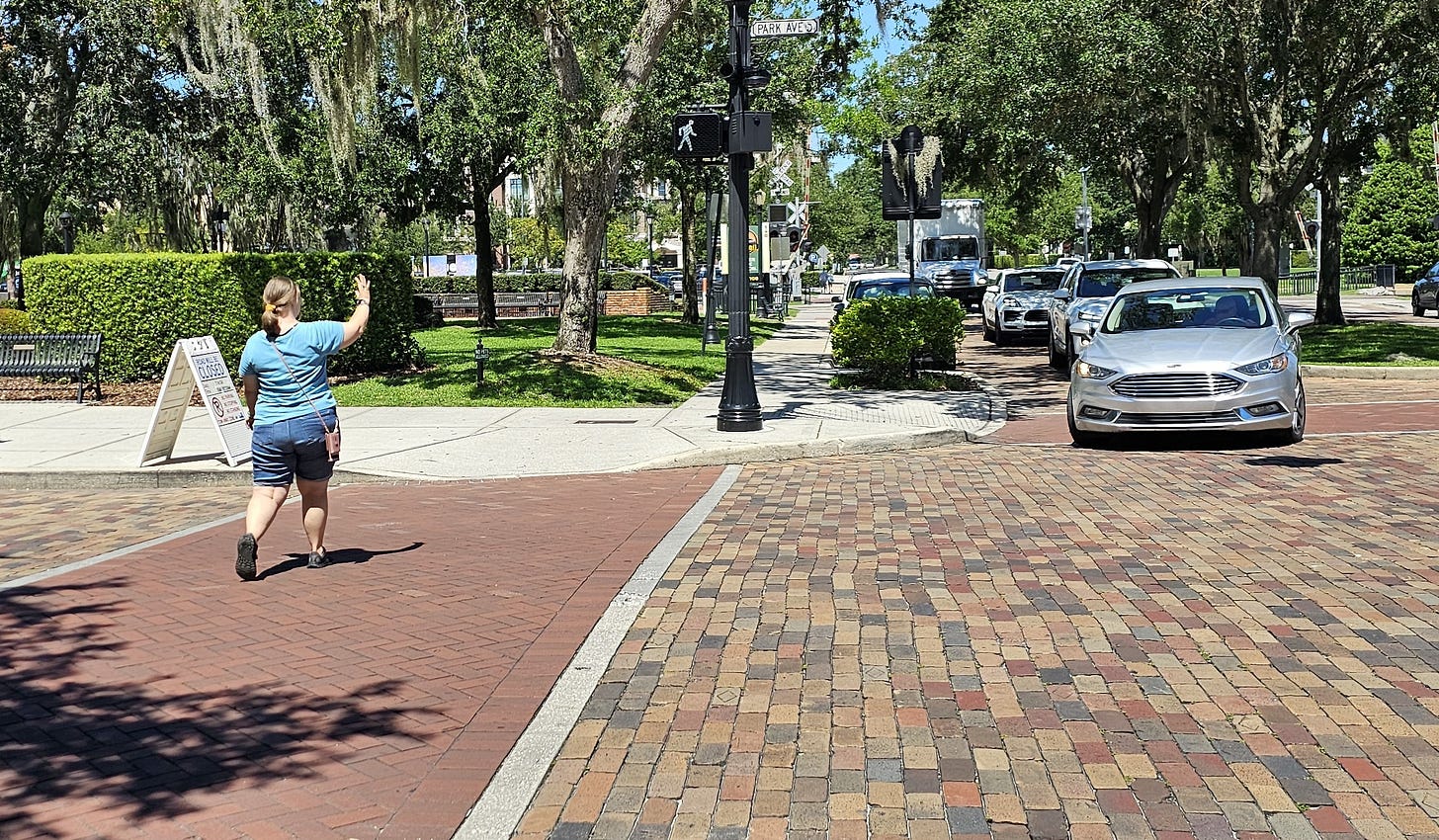The 7 Mental Frameworks
We teach engineering students physics, but we don't teach them any useful psychology.
I’m going to make my definition of a street very simple:
Street: a place where conflicts are negotiated eye to eye.
In most of our driving, we’re manipulating a large tool around other tools—and we treat everyone on the outside of the vehicle with about the same level of care as we treat inanimate objects.
Streets are different. Streets are managed interpersonally. That means their operations are governed by psychology, not physics. The problem is that we don’t teach engineers psychology. Even when we do, we don’t show them how those concepts apply to what they’re designing.
Me and my research team spent 4 years pouring over data from drivers in the wild. I wanted to know how I could design an environment where everyone behaved.
Spoiler: You can’t.
What you can do is design an environment where people feel comfortable walking and biking. When there are people for drivers to interact with, they will behave. They pay attention. They watch out for others. They smile and wave. Without it, they yell at everything around them like they’re a printer that won’t cooperate. I found a funny video by British Comedian, Jake Lambert, that pretty well sums it up:

The 7 Mental Frameworks
I realized over the last few months of this blog, I have yet to get all of the mental frameworks down in one short summary, so here it goes—as short as I can make it and with links to the previous posts for more detail if you want it:
1. Automaticity: Once a driver moves beyond the novice stage, nearly everything they do in automatic. They’re using Kahneman’s System 1 monitoring/monkey brain rather than System 2 style higher order thinking.
2. People get Priority: Interacting with other people seems like one of the primary functions the brain is designed to do—above nearly everything else. We prioritize perceiving and interacting with other humans, and it has a bigger impact on us than even basic needs like food or water.
3. You can only see so far: The perception of other human beings has concrete physical limitations and requires movement to be salient. You can only read emotions in other people’s faces about 90 feet away and you’re really only looking at a cone about 20 degrees from center. Mapping this limitation on the driver’s typical field of view generates a cone of activity around 60 feet wide and 90 feet long. In this area, you can monitor for other people subconsciously and negotiate conflicts in your full emotional range. You might glance at people outside of this area, but it won’t get the same priority since interaction is less likely. Around 32 mph, you start spending most of your time looking beyond that area and you give up interacting with others in give-and-take ways. Drivers begin to operate their vehicles on a tool-to-tool basis, and objects outside the vehicle are treated with courtesy afforded to most inanimate objects.
4. Expectations: When you expect people, you get ready to interact with them, even before you see them. You know what kinds of places people are likely to be and the places that you’ve seen people before. This is wrapped up in your dopamine reward systems, so it takes a pretty high priority.
5. Novelty: We are all squirrel prone. Brains get bored easy and go do something else. To keep drivers engaged, they must experience regular interruptions along the length of their path. (People make the best interruptions).
6. Workload: If you’re working harder to understand and interact as you drive, you slow down. Managing social interaction is a lot of work. Using the information from frameworks 1-5, I created a speed prediction formula that included doorway density as a proxy for human activity, the visual width of the corridor to address how well we can see, and block length, to address interruption frequency. It works pretty well across a wide range of multimodal environments.
7. Memory Storage: Your visual memory is stored in discrete buckets of time and space. The mental model you make of a space is the bucket the memory gets stored in. When you go into a new space, you have to make (or find) a bucket to store your memories in. When you go through a door or a major intersection, your brain takes a second or two to look around so it has a bucket to store things in. That may mean you forget the area type you just came from or quit looking at individual things while you take in the big picture.
That’s enough drinking from a fire-hose for the day.
While we were away
We had a great time showcasing Brick City Lab at the National Down Syndrome Conference. Katie and I wrote a book that helps people with disabilities think through all that goes into walking, biking, and taking transit unsupervised and I think it came out beautifully. Email me if you want a copy (PTice@ProFoundInsights.net). I’m still fighting website issues so it will be a bit before I can get it into any store.
Up Next:
I’ll get back to the series on the 12 rules for designing a great street next week. I believe the next one is #3:Length—which covers things like how far you should let people see in front of them.





